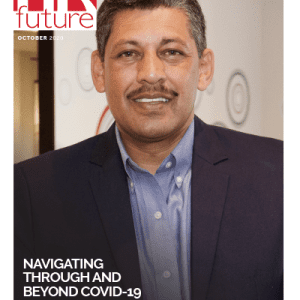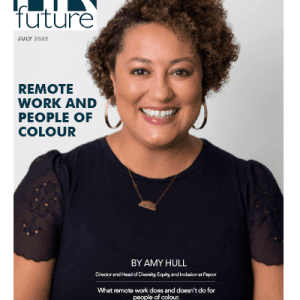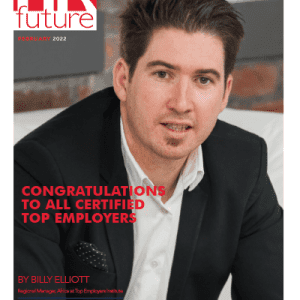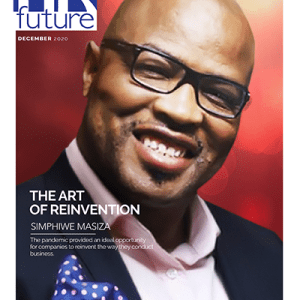You know when it’s time to go; that involuntary sense of hesitation discovered inside what only looks like your own body, a hesitation like a movement in itself – David Whyte
60.63.68.72.79.
These numbers reflect the ages of an entrepreneur, CEO, health professional, a banker and Paul McCartney. And they are all still working.
Case study: Is this you?
The client is 63 years old and the CEO of an international organization. During the past 10 years she managed to merge organizations, to expand the reach of the current organization, managed many changes in and restructuring of the organization, negotiated numerous financial transactions.
Now, she is transitioning from CEO to “what next”. Company policy demands retirement at 65.
She is experienced, recognized as a thought leader in her work environment, she is fit and healthy and she is not ready to retire.
Ageing world
The world population is progressively ageing. Already there are more than 1 billion people aged 60 years and older. The United Nations declared a Decade of Healthy Ageing from 2021-2030 aligned with the Sustainable Development Goals to encourage collaboration between all stakeholders to improve the lives of older people (WHO, 2019).
Two of the areas of action are to create age-friendly environments and prevent ageism.
A. The World of Work for the Older Person
For many people around the world, employment is an important part of one’s identity.
In the world of work it is generally accepted that the older worker will make space for the younger worker. This viewpoint is even more prominent in our current financial climate with unemployment figures higher than ever before.
Henkens (2021) defines healthy pathways to retirement (HPTR) as “older workers’ ability to reach their planned retirement ages in good mental and physical health, while maintaining high work performance”. Retirement, like other life transitions are bound to cultural and social norms; and as such are related to the timing of the transition.
Many countries and cultures are well known for their older populations and have experience in managing these older person environments. Age-friendly workplaces include formal agreements, but also informal agreements to accommodate the needs of the individual employee.
In Okinawa, famous for their number of older people, and successful ageing, there is no word for retirement. Nobody retires. As the person ages he/she is encouraged to take on positions to match capability, capacity and doing something you love (Wilcox, et.al., 2001). An example is a former engineer who worked for a car manufacturer moving to a part-time position at a school as maintenance manager and support teacher.
B. Ageism in the workplace
Age-inclusive norms in the workplace contribute to positive diversity. According to Ashton Applewhite, author of This Chair Rocks, the different age groups have different skills sets. Researchers Seligman and Gopnik and others (2017) study creativity and state that older people use knowledge, skills and life experience in decision making while younger people look for solutions in their environment.
Ageism workplace stereotypes:
- older people cannot manage new technology
- they are slow and cannot handle physical tasks
- they are ‘sickly’ and cannot handle stress
- they are burned out and tired of work.
Youth (millennials) are often described as
- persons with no work ethic
- they need their hands held
- they are irresponsible.
Organizations with supportive age-inclusive practices create a positive workplace, employee satisfaction, and organizational productivity, while mitigating social, psychological, and work-related problems (Henkens, 2021).
D.E.C.I.D.E. – a coaching framework for transitioning
This framework was developed and tested over a period of 8 years in coaching conversations with people transitioning to the world of the older person, leaving employment or place of working.
Dreaming
When we dream, we often move between what is real and the imaginary. Often with confusion, bits of clarity and even with emotional awareness of fear, joy, anger, or sadness. The person moving from a career because of becoming an older person, oftentimes find him-/herself in this uncertainty – a stirring in the heart and mind.
Dreaming is a time of patience where the mental shackles are released to open the mind to new possibilities.
Extending
Think of the first moments of waking up and the natural tendency of the body to stretch and yawn. This act of pandiculation is establishing the person’s early awareness of lengthening in the body. Awareness at this stage of the process is to establish a vision or an image of the outcome.
The primary goal of extending is to get the timing right. Timing is an intersection of time and time frame. Questions relating to timing include
- Where are you in your current career?
- Do you still find joy and fulfillment in your job?
- Do you have personal reasons (e.g. your health) for leaving your job earlier?
- Do you have personal reasons to postpone your planned retirement?
Connecting
Connecting is about finding the collective wisdom in your personal and work environments for self-interest. With the support of a professionally credentialed coach the complete environment for transitioning and retirement planning can be scanned to gather information.
- The first level of connecting is conversations with family, partners and friends relating your self-knowledge with that information about yourself that you are often not aware of.
- The second level of connecting is with the policies of the workplace. These include retirement practices, age-inclusive practices, training and development and cultural awareness.
- The third level of connecting relates the country context. These include pension policies, other economic contexts and possible crises and risk reduction measures.
Integrating
Integration of data about self and environment is an important strategic stage. It is also a period of stopping and breathing and seeing clearly. Organizations often take a clear position on what is acceptable and in alignment with in-house policies. These are based on country specific policies and cultural norms.
However, it is also an opportunity for the NO voice of the employee to be heard. It is the employee that challenges both the informal and the formal arrangements to be evaluated.
Integration is a time for deliberate and slow stepping towards the outcome – this is the stage of “how” (George, 2019).
Discovering
The discovery phase is compared to the journey you are on. You travelled through valleys, crossed rivers, spiraled through mountain passes and even navigated a few potholes.
But then you come to a crossing that is not well described on your map. You now must create scenarios for your awaiting territory.
Who is your guide for this next part of the adventure? This part of your journey may have a few disruptions from your environment, or you choose to disrupt yourself.
In creating future scenarios, the employee explores knowledge, skills, experience. The scenarios open the mind to the question “what else?”. Exploration around improving skills, options for training and development, how to implement plans and above all, weighing all options.
Evolving
When the employee comes to the final part of his/her/their journey, the mind gently descends into the heart and body. Let it be.
However, the journey does not end here. Change is an important part of an employee’s life. It is not a simple process.
For the retired person the habits described by Dorie Clark in The Long Game (2021), keeps the journey on track:
- Independence – stay true to yourself and your vision
- Curiosity – be curious about your world: people and planet and its inhabitants
- Resilience – keep experimenting, discovering, integrating, and reflecting on what is joyful and fulfilling.
The D.E.C.I.D.E. framework creates a space for deliberate small steps, increased self-awareness, and collaboration between the many stakeholders in this process of role adjustment and possible retirement. An ICF professional credentialed coach is an integral part of this process when the organization adheres to healthy pathways to retirement.
How can HR and professional coaching collaborate to create healthy pathways to retirement?
According to Henkens (2021), there are 3 ways
- Review formal agreements (HR specific)
- Use informal agreements to support employees’ specific needs (Coaching)
- Provide an age-inclusive social environment to support the transitioning of the older employee for either retirement of prolonged employment (HR and Coaching collaboration).
When an organization supports the older person with retirement, the transitioning process builds confidence and loyalty for existing employees, it is a powerful learning process for cultural growth, diversity awareness and inclusion, and the retired person has the option to stay an integral part of the organization through mentoring and to be custodians of organizational history and legacy.
The ageing world is a reality, and many countries are going to be faced with challenges in the workplace with older employees and subsequent retirement. To navigate healthy and culturally aware age-inclusive practices requires a creative approach to include the individual, the organization within the specific national context.
If you need support on your organisation’s and/or leader’s coaching journey, do contact us at thoughtleadership@coachfederation.org.za and our team of ICF professional coaches in South Africa will be happy to help.
The International Coaching Federation (ICF) is the world’s largest organization leading the global advancement of the coaching profession and fostering coaching’s role as an integral part of a thriving society. Founded in 1995, its 40,000-plus members located in more than 145 countries and territories work toward common goals of enhancing awareness of coaching and upholding the integrity of the profession through lifelong learning and upholding the highest ethical standards.
Through the work of its six unique family organizations, ICF empowers professional coaches, coaching clients, organizations, communities and the world through coaching.
ICF South Africa is a Chartered Chapter of ICF with 450+ members of which 330+ are ICF certified at the ACC, PCC or MCC level.
References
- Applewhite, Ashton. This Chair Rocks: A Manifesto Against Ageism. 2019.
- George, Bill. The CEO’s Guide to Retirement. Know when to leave—and plan for what’s next.
- Clark, Dorie. The Long Game. How to Be a Long-Term Thinker in a Short-Term World. 2021.
- Henkens, K. Forge Healthy Pathways to Retirement with Employer Practices: A Multilevel Perspective, Work, Aging and Retirement, 2021.
- Gopnik, A. and Griffiths, T. What Happens to Creativity as We Age? 19 August 2017.
- https://ifa.ngo/positions/decent-work-for-all/
- Seligman, M., Forgeard, M. and Kaufman, S.B. Creativity and Aging: What We Can Make With What We Have Left. 21 June 2017.
- WHO UN Decade of Healthy Ageing 2021-2030.
- Willcox, Bradley J., Willcox, Craig D. and Suzuki, Makoto. The Okinawa Way: How to Improve Your Health And Longevity Dramatically. 2001.
Annabe Tredoux is an ICF Professional Certified Coach (PCC). Her clients are individuals and teams (healthcare and education) who strive to adapt to change in a meaningful and sustainable way. Applying the D.E.C.I.D.E. framework, an integrative somatic Solution Focused Approach, Annabe supports her clients in various stages of transitioning in life and work.











